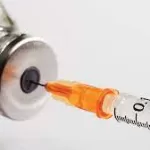
Delegates and representatives left the Global Neglected Tropical Diseases Programme Partners’ Meeting with a stirring call to action from its director Dr Ibrahima Socé Fall.
As the multinational meeting, attended by some 300 key partners, came to an end in Geneva on Tuesday 13 June, Dr Fall urged participants to take on board the message that, “if we do not challenge ourselves, we cannot evolve and improve”.
In a wide-ranging event held to review progress against the WHO road map for neglected tropical diseases 2021–2030 and generate a better understanding of global NTD operations from both disease-specific and cross-cutting perspectives, partners, donors, technical partners, institutions and country representatives reinforced their commitment to achieving an ambitious target: a world free from neglected tropical diseases by 2030.
The meeting’s primary theme centred around the vision of “One community delivering one Global NTD Programme”.
Taking their cues from the three key strategic shifts advocated in the road map – greater country ownership, measuring impacts not process, and a commitment to cross-cutting activities and collaboration for greater efficiency – discussions were pragmatic, clear-sighted and suffused also with the need for health equity and justice to tackle NTDs.
Only such an approach, the meeting heard, can bring about the change that is needed by some of the world’s poorest communities to achieve the United Nations 2030 Sustainable Development Goals.
In the first such global meeting since the launch of the road map in January 2021, delegates heard also from WHO Director-General Dr Tedros Adhanom Ghebreyesus.
Welcoming participants at the beginning of the two-day symposium, Dr Tedros said, “This gathering illustrates what WHO is all about – partners coming together to leverage their collective strength to address global health challenges that none of us could address alone.
“A multifaceted challenge like neglected tropical diseases takes a multifaceted approach, and that is what we bring, together”.
Delegates and participants spent the subsequent two days identifying the major gaps and challenges to achieving high-level goals and local, on-the-ground challenges. Those on-the-ground challenges include ensuring that people directly affected by NTDs, and those directly responsible for administering interventions against NTDs, are solicited and acknowledged, particularly in terms of communication and community engagement. The meeting noted also the importance of developing communities of practice, in order to build the capacity and confidence of the global NTD workforce.

In further discussions, delegates agreed on principles and practical steps to implement action towards the stated targets and planned together for a Global Action Plan for 2025–2030.
Key actions and decisions arising from the meeting included recommendations for strengthening and operationalizing national coordination platforms to ensure coordination for joint planning and for monitoring and evaluation, and to ensure more efficient supply chain management within national systems.
The Partners’ Meeting took place also at the end of a major functional review process within WHO’s Department of Control of Neglected Tropical Diseases.
Over the course of the past four months, WHO has been hearing contributions and testimony from all its partners and stakeholders, in order to ensure that it itself embodies the values of accountability, transparency and equity that it espouses and demands.
Those values also include ensuring that NTDs are repositioned in the global health architecture. Meeting participants welcomed the emphasis on the key roles that the NTD community can and must play in contributing to wider challenges such as Universal Health Coverage, One Health and the increasing threat of global climate change.
Delegates attending in person were also able to enjoy an exhibition dedicated to neglected tropical diseases at WHO headquarters. A set of metal panels was commissioned to illustrate the 20 conditions that make up the NTD grouping, and these were accompanied by photographs and information illustrating the actions that have been put in place over the course of many decades to tackle them.











